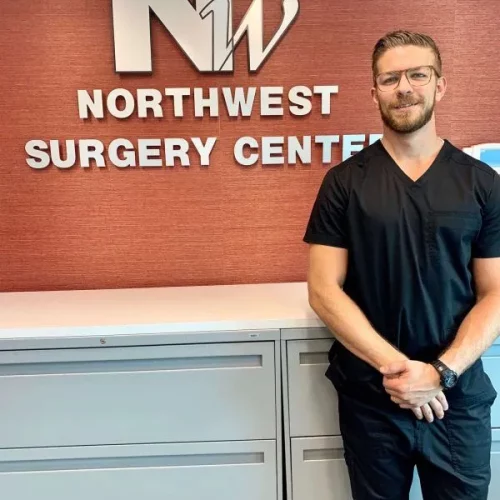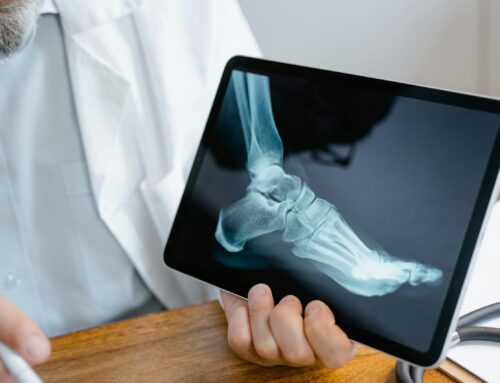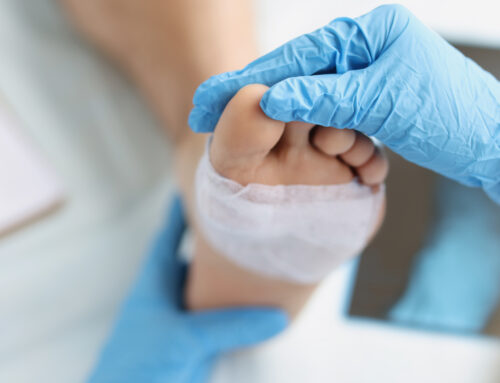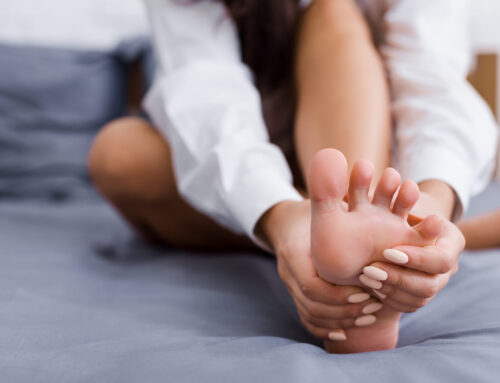Hammer Toe Causes, Symptoms, and Treatment
Hammertoe, also known as mallet toe and claw toe, describes the foot condition that causes the second, third, and/or fourth toes to curl down and not lay flat. It can be extremely painful. Over time, the condition might stiffen the toes in that position.
What Causes Hammer Toe?
Hammertoe is caused by an imbalance in the tendons, ligaments, and muscles that play a vital role in holding the toe straight. These imbalances cause a lot of pressure on toe joints and tendons, which further forces the toe to change its shape. Some of the causes that trigger the imbalance are:
- Genes: Hammertoe can be inherited. Many people have the genetic tendency to develop hammertoe because they also suffer from foot instabilities such as high foot arch or flat toes.
- Arthritis: There are many cases reported where people suffering from Arthritis also suffer from hammertoe.
- Toe Injury: Shoes can be the main culprit here. If you wear shoes that are tight, narrow, too short, or pointy, you are pushing your toes into an unnatural position, which causes the aforementioned imbalances. That is one of the reasons women mostly suffer from hammertoe.
- Aging: As you grow old, your bones and muscles begin to lose their strength. Lack of strength causes the toe muscles to lose the proper hold required to keep the toe straight, which results in the curling of the hammertoe.
What are the symptoms of hammertoes?
As hammertoe begins to develop, you will probably start to feel pain and discomfort while you walk. When you try to stretch the bent toe to its normal position, you will feel pain and the toe will return to its curled-shape as soon as you lose the grip. Hammertoe can be mild to extremely severe. If the condition persists, the toes may become stuck in the curled position.
Mild Hammer Toe Symptoms
- Pain
- Corns or Calluses
- Difficulty in walking
- Claw-like toes
- Toes curled downward
- Inability to wiggle your toes or flex your foot.
Severe Symptoms
- Severe pain
- Swelling, burning sensation, or redness
- Open sores
Hammer Toe Treatment
Northwest Surgery Center is the pioneer of the true Minimally Invasive Hammertoe Correction Procedure, providing treatment options to fix not only hammer toe but also bunions and heel spurs. What makes our minimally invasive procedure different from others is that it’s much faster, safer, and more cost-effective.
Our modern surgery suites are outfitted with the latest technology and equipment. The entire procedure of creating small incisions and correcting the curled architecture takes place under local anesthesia within a 90-minute timeframe, including pre-op and post-op.
The best part is, our Minimally Invasive Hammertoe Correction Procedure allows patients to walk or drive immediately after the procedure, and depending on your job, get back to work the very next day!
So, don’t let toe pain disturb your lifestyle, call us today and get on the road to pain-free walking.
Schedule a free consultation today.
Common Questions About Bunion Surgery
Why is minimally invasive surgery a better option compared to others?
Minimally invasive surgery causes less harm because there is only minor disruption of the soft tissue. This process ensures a quick recovery. The patient can walk immediately following the surgery and get back to their normal lives quickly. Certain minimally invasive foot surgery causes minimal pain. The entire outpatient procedure lasts about 90 minutes, from your arrival to the time you walk out of your surgery and drive yourself home. Compare bunion surgery types here.
What are some of the the advantages of minimally invasive surgery?
Quick outpatient surgical procedure – about 90 minutes including pre- and post-op.
Almost pain free, walk out of surgery and drive yourself home.
Minimal or no time off work.
Quick recovery time, measured in weeks, not months.
A small cut is applied rather than large incision.
Smaller incision results in fewer side effects including less bleeding, less pain, less scarring, reduced intake of narcotics, less complications which reduce the risk of infection and avoid little injury on the muscles, nerves and tissues.
Compare bunion surgery procedures here.
When can I go back to work?
This depends on the type of surgery and the type of work you do. People who’s job requires them to be on their feet for hours at a time might have to be assigned “light duty” work or miss more work than people who sit for a long time at work.
LinkedIn Profile Link: https://www.linkedin.com/in/jordan-sullivan-501a09141

About the Author
Dr. Jordan Sullivan, DPM, is a board-certified podiatrist at Northwest Surgery Center specializing in minimally invasive foot and ankle procedures. He’s passionate about helping patients get back on their feet faster with less downtime.
Learn more about Dr. Sullivan here.





